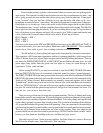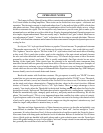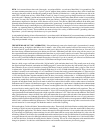
TROUBLE-SHOOTING
There are a number of possible symptoms of something not quite right, some may be interfacing, others we will touch
on as well. The Dual Vocal Combo has a variety of balanced and unbalanced inputs and outputs optimised for typical standards
and most problems are due to the right cable in the wrong jack. However if you suspect a problem the following paragraphs
should help.
NO POWER, NO INDICATORS, NADA - Probably something to do with AC power. Is it plugged in? Check the fuse on
the back panel. A blown fuse often looks blackened inside or the little wire inside looks broken. A very blackened fuse is a big
hint that a short occured. Try replacing the fuse with a good one of the same value and size. If it blows too then prepare to send
the unit back to the dealer or factory for repair. The fuse is a protection device and it should blow if there is a problem. If the
unit works with a new fuse, fine. Check the MAINS VOLTAGE SELECTOR if one is fitted. Some of our models are able to
have them and some don't. It should be set correctly for your mains voltage.
LIGHTS BUT NO SOUND - First try plugging the in and out cables into some other piece of gear to verify that your wires
are OK. Assuming that it was OK into the other unit it probably is still a wiring thing. The AES standard calls PIN 2 HOT on
XLRs but there is still lots of gear out there with PIN 3 HOT. When two units are connected and both are unbalanced but don't
seem to agree which pin is hot - the signal is shorted out. If it is not lost entirely, it will be almost gone and extremely distorted.
THE CURE - a phase reversing adapter that swaps pin 2 and pin 3 on one XLR - or get out a soldering iron and swap wires
yourself. All Manley gear after 1995 is pin 2 hot. Some Manley gear has balanced and floating outputs and some has unbalanced
transformerless outputs. This unit has two discrete line drivers - one driven from the other. If the XLR pin 2 is shorted to ground
or pin 3 there will be no signal from the XLR. If pin 3 is shorted to ground - a typical way to drive unbalanced inputs - then
the output on pin 2 will be 6 dB low. The best way to drive unbalanced inputs is with the unbalanced outputs.
LEVELS SEEM TO BE WRONG, NO BOTTOM - Several possible scenarios.
The above paragraph describes the output line drivers. If you are using the balanced XLR outputs and feeding an unbalanced
input (it happens) you will only be getting 1/2 the signal which means that you lost 6 dB. There is a "trick" if you just want to
use the XLRs but from time to time feed unbalanced inputs. Insert a 1/4" mono (tip - sleeve) plug (unwired) into the unbalanced
output. This makes the levels right. You could leave this plug in permanently but we don't recommend it because you can have
6 dB more headroom into balanced inputs if it is removed. More headroom is one of the biggest factors of great sounding gear.
Manley uses the professional standard of +4 dBm = Zero VU = 1.23 volts AC RMS. A lot of semi-pro gear uses the hi-fi
reference of -10 dBm = Zero VU. This is a 14 dB difference that will certainly look goofy and may tend to distort. Often there
are switches on the semi-pro gear to choose the pro reference level. We do not provide that kind of switch because of inevitable
compromises in the signal path. If the loss looks close to 6 dB and it sounds thin then one half of the signal is lost. The cause
is probably wiring again. One of the two signal carrying wires (the third is ground / shield on pin 1) is not happening. Check
the cables carefully because occasionally a cable gets modified to work with a certain unit and it seems to work but its wrong
in other situations. If only one side of the Limiter exhibits this problem, it may be a problem in the Limiter. See the next item.
If you have almost no signal and what you can hear is distorted then you probably have pin 2 shorted to ground or to pin 3.
This might happen if the cable is mis-wired and/or you are feeding an unbalanced input.
USING THE 1/4" JACKS BUT THE LEVEL IS LOW - The 1/4" output jacks on this unit are unbalanced and require a
mono plug (tip - sleeve plug) and not a stereo plug (tip - ring - sleeve plug. The Limiter uses the ring to set the output level for
this output. When the ring is shorted to the sleeve the output becomes 6 dB louder. This is needed because the XLR has
differential outputs which together give that extra 6 dB. Using the ring compensates for this difference and both outputs will
be the same level (+4 dBv). Other manufactures often use a common circuit that does this in a different automatic way. The
generic name is "transformer like" but unlike transformers, these outputs can be unstable (oscillates) into some cables and often
have low headroom into unbalanced inputs. Our method works better as long as one uses a mono phone plug.
We have included an appendix: WIRING YOUR OWN CABLES that may help.
For reference both the XLR and 1/4" back panel inputs are balanced electronically and not with a transformer. The inputs will
work fine and should reject hum from either balanced or unbalanced outputs. The 1/4" Direct input on the front is unbalanced
and meant for guitars and basses. In many situations it can be used for low level sources but watch out for ground loop related
hum.
13


















